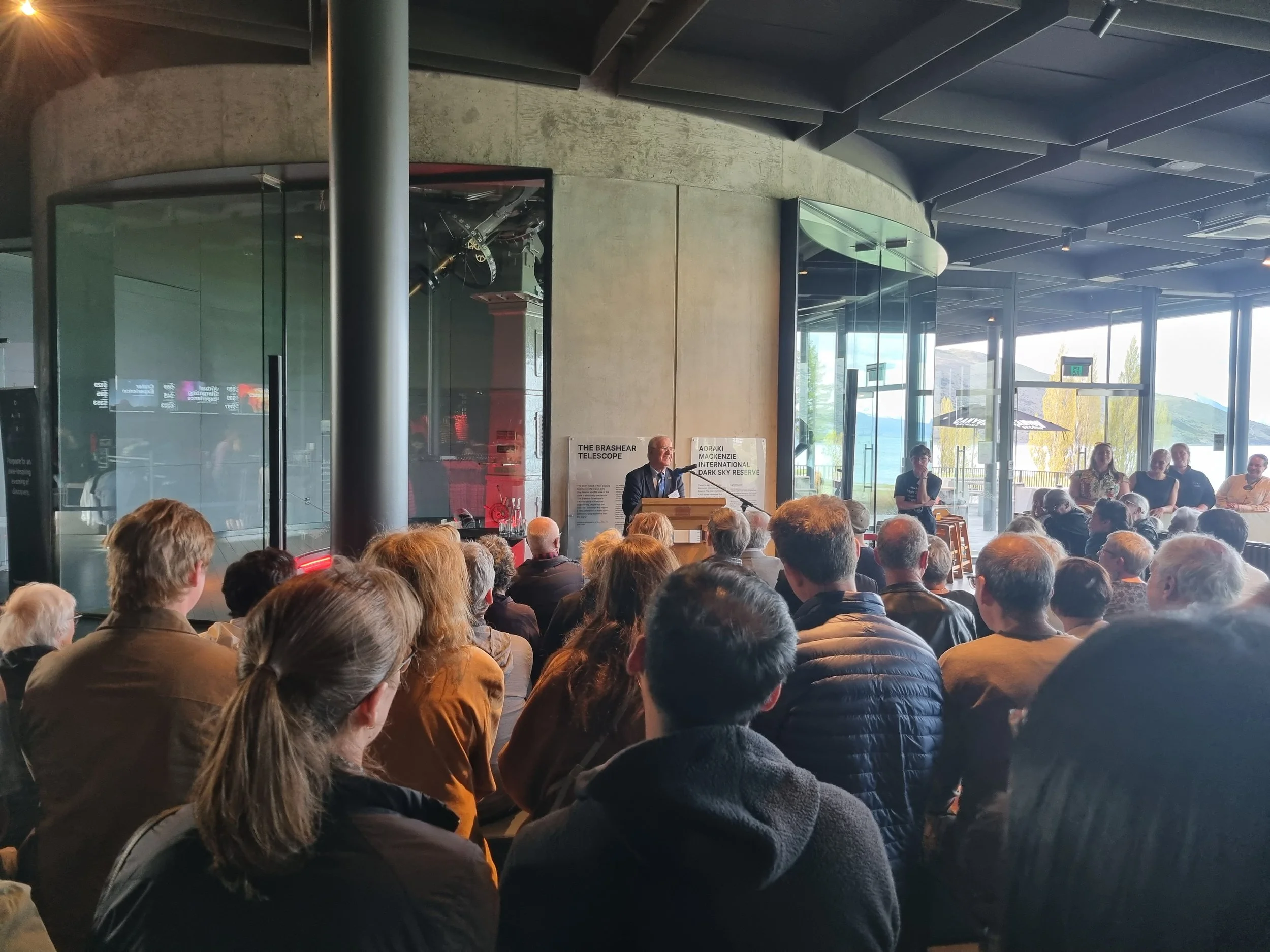New Zealand’s Vision as a Dark Sky Nation
11/11/24
Lake Tekapo, New Zealand
The 4th International Dark Sky Conference, held in Tekapo, New Zealand, from October 20-23, 2024, gathered international experts, advocates, and scientists to discuss the pressing issue of light pollution and its global impacts. With the theme "Dark Skies for All: A Call for Action," the conference highlighted the essential need for legislative action to reduce light pollution, the significance of preserving cultural heritage, and the potential for New Zealand to become a model “Dark Sky Nation” and an international ambassador in the dark sky movement.
Welcoming Ceremony, Dark Sky Project, Lake Tekapo
Key Topics and Goals
The conference emphasized the detrimental effects of artificial light at night (ALAN) on ecosystems, human health, and astronomical research. Organizers from the Royal Astronomical Society of New Zealand and the Aoraki Mackenzie International Dark Sky Reserve collaborated to host sessions on sustainable lighting, astro-tourism, and dark sky conservation. Conference attendees included representatives from environmental and health sectors, local government, tourism industries, and lighting engineers, all of whom are critical to implementing dark sky policies nationwide.
University of Canterbury’s Mt John Observatory
Quotes and Insights
Ruskin Hartley, Executive Director of the International Dark Sky Association (IDA), opened the conference by underscoring the gravity of light pollution, stating, "Eighty percent of people live under light-polluted skies and cannot see the Milky Way," which disconnects people from the natural beauty and inspiration of the night sky. Hartley was optimistic about addressing light pollution, explaining that simple technological solutions, like dimming and turning off unnecessary lights, could “fix the problem at the speed of light” if adopted on a large scale. He encouraged more robust efforts over the next 5-10 years to certify dark sky places and implement policies that prioritize responsible lighting
.
Dr. Brian Boyle, another leading advocate for dark skies, discussed the intersection of dark sky preservation with climate action. He highlighted that reducing excessive lighting could cut down on energy use, contributing to a smaller carbon footprint. Boyle emphasized that the movement goes beyond just stargazing: it offers tangible environmental benefits by conserving energy and protecting wildlife affected by nocturnal light exposure.
Ellen Cierad, shared findings from a recent New Zealand-based public survey on perceptions of outdoor lighting. The survey revealed that most participants see crime prevention as the primary reason for lighting at night, followed closely by concerns for personal safety. Cierad showcased a common imbalance: while people associate more light with increased safety, excessive or poorly directed lighting can have the opposite effect. She explained, “Light is only relevant when people are present,” emphasizing that common security lighting —often high-intensity LED spotlights positioned close to horizontal—create glare that can reduce visibility, ironically making it harder to identify potential threats.
Her survey also indicated strong public support for preserving the night sky, with 50% of New Zealanders strongly agreeing on the importance of dark sky conservation. This growing awareness reflects a broader recognition of the health and environmental benefits of maintaining natural darkness, aligning with the conference’s theme of reducing unnecessary nighttime lighting to protect ecological and human well-being.
University of Canterbury’s latest Telescope: Mt John Observatory
Cultural Significance and Indigenous Perspectives
The conference also underscored the cultural and spiritual significance of the night sky in New Zealand, notably in Māori astronomy and the Matariki tradition, which celebrates the Māori New Year marked by the appearance of the Pleiades star cluster. Integrating cultural perspectives on dark skies resonated with delegates and added a unique dimension to the discussions. Participants explored ways to enhance public engagement with the night sky as a shared heritage, aiming to protect this connection for future generations
.
Hon. Matt Doocey Minister for Tourism & Hospitality
At the conference, New Zealand’s Minister for Tourism & Hospitality Hon. Matt Doocey hosted an engaging Q&A session, addressing how dark sky conservation can play a significant role in the country’s tourism strategy. The Minister highlighted New Zealand’s unique potential to attract international visitors eager to experience its pristine night skies, remarking, “In protecting our dark skies, we’re not only preserving our natural heritage but also opening doors for sustainable tourism that benefits our communities and environment.” The session also covered ways New Zealand aims to balance astro-tourism growth with conservation efforts, underscoring a commitment to making New Zealand a global leader in dark sky tourism.
New Zealand’s Vision as a Dark Sky Nation
With seven certified dark sky areas—Aoraki Mackenzie, Aotea (Great Barrier Island), Kawerau Gibbston Park, Kaikoura, South Wairarapa, Wai-iti (Tasman) and Stewart Island—New Zealand is advancing rapidly as a global leader in dark sky preservation. The conference organizers encouraged communities to pursue accreditation and join New Zealand's movement towards a Dark Sky Nation. Adam Dalton from the IDA remarked on New Zealand's leadership, noting that the country’s applications for dark sky certification are among the highest per capita worldwide, reflecting its commitment to conserving night skies.
The economic benefits of dark sky certification have been considerable, particularly in the Mackenzie area, where astro-tourism contributes significantly to the local economy. Professor John Hearnshaw, chair of the Aoraki Mackenzie International Dark Sky Reserve, highlighted that astro-tourism accounts for nearly 10% of the region’s tourism income, drawing visitors eager to experience pristine night skies
.
Conclusion: The Path Forward
The 2024 New Zealand Starlight Conference concluded with a call for continued collaboration across sectors to adopt responsible lighting practices and legislative measures that preserve dark skies. The event positioned New Zealand as a potential global role model in the movement, advancing awareness and actions that could inspire similar initiatives worldwide. Through fostering dark sky places, promoting eco-friendly lighting, and engaging communities, New Zealand is shaping a future where the wonders of the night sky remain accessible to all.
Dark Sky Project - Telescope on Display





